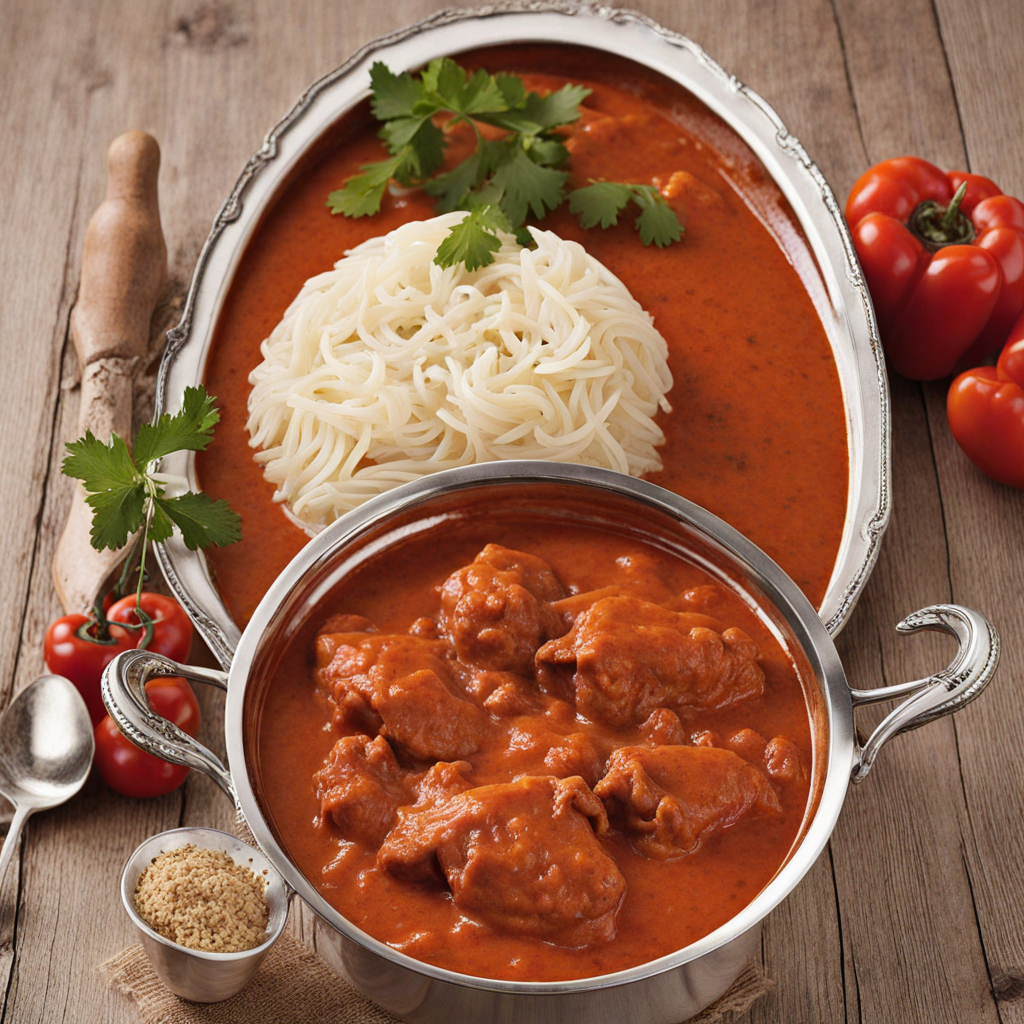Káposztás Tészta
Káposztás Tészta is a traditional Hungarian dish that beautifully marries the flavors of pasta and cabbage, creating a comfort food experience that is both hearty and satisfying. The star ingredient, cabbage, is typically sautéed until tender and sweet, allowing its natural flavors to shine through. The pasta, often egg noodles or tagliatelle, is cooked al dente and then tossed with the caramelized cabbage, which adds a delightful sweetness and a subtle crunch to each bite. The dish is traditionally seasoned with salt, pepper, and sometimes a hint of paprika, enhancing its rustic charm without overpowering the main ingredients. To elevate the flavor profile, many home cooks incorporate crispy bacon or smoked sausage, which adds a savory depth and a satisfying crunch. The combination of the rich, smoky meat with the sweet cabbage creates a balance that is both comforting and complex. For those seeking a vegetarian option, the dish can easily be made without meat while still retaining its delicious essence. Some variations may even include a sprinkle of fresh herbs or a dash of vinegar, providing a bright contrast to the richness of the dish. Served warm, Káposztás Tészta is often enjoyed as a main course, making it a perfect dish for family gatherings or cozy evenings at home. It's a meal that reflects the heart of Hungarian cuisine—simple ingredients transformed into something truly special. With each forkful, you’ll experience a blend of textures and flavors that transport you to the heart of Hungary, making it an exciting discovery for anyone looking to explore new culinary horizons.
How It Became This Dish
Káposztás Tészta: A Culinary Journey through Hungarian Tradition #### Origins of Káposztás Tészta Káposztás tészta, a beloved dish in Hungarian cuisine, translates to "noodles with cabbage." This humble yet hearty meal encapsulates the essence of rustic Hungarian cooking, highlighting the resourcefulness and creativity of the country's culinary heritage. Its origins can be traced back to the agrarian lifestyle of 19th-century Hungary, where cabbage was a staple vegetable, and flour was a primary ingredient in everyday meals. The dish is believed to have evolved from the peasant tradition of utilizing readily available ingredients. Cabbage, rich in nutrients and easy to cultivate, became a prominent feature in the diets of Hungarian farmers. Combined with homemade egg noodles, káposztás tészta provided a satisfying meal that showcased the simplicity and flavors of the land. This dish reflects the historical context of Hungary, where food was often created from what was on hand, promoting both sustainability and ingenuity. #### Cultural Significance Káposztás tészta is more than just a meal; it is deeply woven into the fabric of Hungarian culture. Traditionally, it was prepared during the long winter months, when fresh vegetables were scarce. The dish exemplifies the Hungarian philosophy of "food as comfort," often serving as a nostalgic reminder of home-cooked meals shared with family. In many households, it is a common practice to prepare káposztás tészta on Fridays, particularly during Lent, when meatless meals are customary. Moreover, the dish transcended class boundaries, being enjoyed by both peasants and the middle class. This universality highlights its significance in Hungarian culture, where food serves as a unifying element across different social strata. Over time, káposztás tészta has found its place in festive gatherings, family celebrations, and everyday meals, embodying the warmth of Hungarian hospitality. #### Ingredients and Preparation The essential components of káposztás tészta include cabbage, egg noodles, and a few simple seasonings. The dish typically begins with sautéing finely chopped onions in lard or oil until golden brown. Shredded cabbage is then added, seasoned with salt, pepper, and sometimes a hint of caraway seeds, which lend a distinctive flavor. The cabbage is cooked until tender, allowing its sweetness to emerge. While the cabbage is cooking, the egg noodles are boiled until al dente. Once both components are prepared, they are combined—tossed together in a harmonious blend. Some variations incorporate bacon or sausage for added flavor, or a dollop of sour cream on top for creaminess. Each family may have its own secret twist, passed down through generations, contributing to the dish's rich tapestry of flavors. #### Development Over Time As Hungary transitioned through various historical phases—through the Austro-Hungarian Empire, two World Wars, and the communist era—so did its culinary landscape. Káposztás tészta remained a staple, adapting to the changing times and social conditions. During periods of economic hardship, the dish became a symbol of survival, representing the ingenuity of Hungarian households in making the most of what they had. In the post-World War II era, with the establishment of communism, food scarcity persisted, and traditional recipes like káposztás tészta provided comfort and a sense of continuity. It was during this time that the dish began to gain recognition beyond its humble origins. It became a staple in restaurants and eateries, showcasing the appeal of traditional Hungarian cuisine to both locals and tourists. The fall of communism in the late 20th century ushered in a new era for Hungarian gastronomy. Chefs began to revive and reinterpret traditional recipes, giving rise to a renaissance of Hungarian cuisine. Káposztás tészta found itself on the menus of modern restaurants, often presented with a contemporary twist while still honoring its roots. Chefs experimented with different types of noodles and enhanced flavor profiles, showcasing the dish's versatility and adaptability. #### Káposztás Tészta in Contemporary Hungary Today, káposztás tészta is celebrated not only as a traditional dish but also as a symbol of Hungarian identity. Food festivals, culinary competitions, and local markets often feature this beloved meal, bringing together communities and celebrating their shared heritage. The dish has also found popularity among younger generations, who appreciate its nostalgic value while embracing modern cooking techniques. In contemporary Hungary, variations of káposztás tészta are abundant. Some regions may add unique ingredients such as mushrooms or different types of cheese, creating localized interpretations. Health-conscious cooks may opt for whole grain noodles or incorporate additional vegetables, reflecting a broader trend towards healthier eating. Moreover, the rise of social media has allowed for the sharing of family recipes and personal stories related to káposztás tészta. Online platforms have fostered a renewed interest in traditional dishes, encouraging home cooks to experiment and share their variations. This dynamic exchange of ideas has ensured that the legacy of káposztás tészta continues to thrive in the digital age. #### Conclusion Káposztás tészta is not just food; it is a narrative woven through the history of Hungary. From its origins as a peasant dish to its status as a cherished symbol of Hungarian culture, it embodies the resilience, creativity, and warmth of the Hungarian people. As culinary traditions evolve, káposztás tészta remains a steadfast reminder of the importance of heritage, family, and the simple joys of shared meals. Its enduring presence on tables across Hungary assures that this dish will continue to be a source of comfort and connection for generations to come.
You may like
Discover local flavors from Hungary







